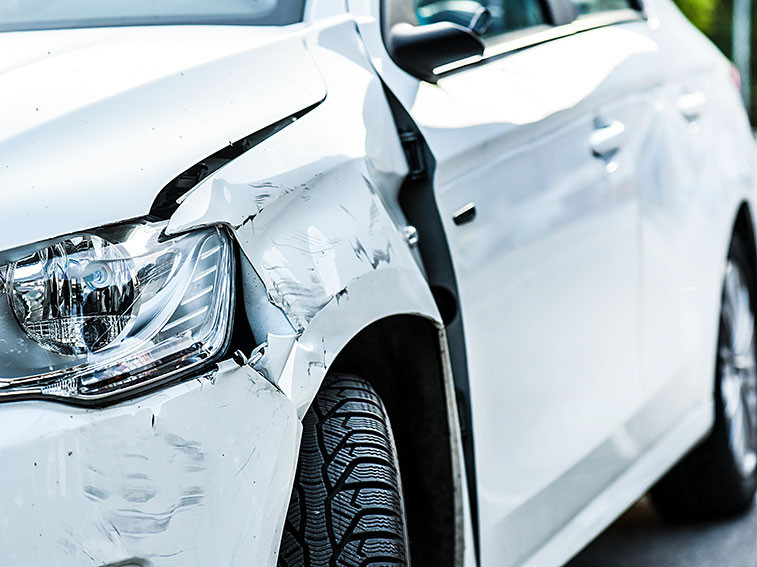Category S is one of the four main salvage titles, or salvage categories, alongside Category N, Category A and Category B. These are applied to salvage cars to categorise them according to the rough level of damage they’ve suffered, helping to give potential buyers a good idea of what to expect. A salvage car is assigned a Category S title when it has sustained severe Structural damage, such as a collapsed crumple zone or a twisted chassis. This is distinct from the Non-structural damage sustained by Category N cars, which can be far more minor things like missing wing mirrors or smashed windscreens.
Obviously, structural damage is the far more serious of the two, and in many cases it can be severe enough to affect the car’s overall roadworthiness. These are just a few of the reasons that Category S cars are generally regarded as more risky purchases for anyone who intends to drive their new purchase rather than break it to pieces for parts.
Even if a Category S car has been repaired to a roadworthy condition, its Category S title will remain on its history and documentation, so it will be visible to anyone who’s considering buying the car. And if you’re one of those people, then before you commit to buying a Category S car there are one or two things that it’s a good idea to get done first. Before we go into detail about those, though…
What are the risks of buying a Category S car?
That almost entirely depends why you’re looking for Category S salvage cars for sale. If you’re planning on buying one with the intention of breaking it for parts, then you shouldn’t have to worry quite as much about what sort of state it’s in, as you don’t need it to be in driveable condition.
However, if you’re buying a Category S car with the intention of driving it, then you need to be a lot more meticulous. Even if it’s been repaired, the car could still have severe structural damage that could make it a danger to drive. Perhaps the most important thing to remember is that this type of damage might not always be picked up on an average MOT test. Therefore, you might not want to take just the buyer’s word that it’s all good to go, especially since it’s your safety (and that of your passengers) that’s at stake.

If you’ve set your heart on a certain Category S car, there are a couple of steps you might want to take:
1. Quiz the seller
By far one of the simplest and easiest steps, so it’s a good one to kick off with - just ask the dealer, garage or private seller detailed questions about the damage it sustained. Try and make them open ended rather than yes / no questions, so you can garner as much useful information as possible. Find out exactly how it was damaged, what parts were repaired and whether there are any lasting effects on the car.
If possible, get your answers in writing, as well as any documentation you can. You may find that garages and other commercial vendors will be in a better position to provide this information as they’re more likely to have paperwork and other details on file. On the other hand, private owners might not be quite so forthcoming, either because their record keeping isn’t quite as good, or they might not want to be!
2. Organise an independent inspection
Whatever the results of your conversations with the seller, it’s always a good idea to get an independent inspection done for your potential purchase. This is the bit that quite a lot of people skip, because it tends to cost somewhere in the region of £200. For many people, that’s more than enough to swallow the savings that they were going to make by buying a salvage car in the first place.
Trust us though, if you really want to drive a Category S car, an independent inspection is more than worth it for the peace of mind it provides in the long run, as it can uncover faults with the car that might not have been caught by an MOT or an even more casual once-over. It’s best to choose a trained motor engineer employed by household names like the AA, the RAC, Dekra or Autolign, all of whom offer independent inspection services for just these sorts of situations.
3. Get a history check
While the independent inspection side gives you peace of mind when it comes to the mechanical components of the car, it’s also worth taking the time and money to get an HPI history check done trace the car’s background, so that you can be sure that all the information you’ve been given about it is correct, and that there are no nasty surprises awaiting you further down the line. Damage that’s been glossed over or entirely undisclosed might end up causing you some serious hassle later on, especially if it’s an issue that could risk compromising your safety in the meantime.
Thankfully, an HPI check isn’t too difficult or expensive to obtain, and normally costs somewhere in the region of £20.
If you need any further information about Category S vehicles, feel free to take a look at our quick guide to Category S cars. And if you’re looking for a salvage vehicle to buy today, you’re in exactly the right place. We’ve got a whole range of choice here at RAW2K, with our online car auctions containing models from leading brands like Ford and Vauxhall. They’re refreshed on a daily and weekly basis - so you’ll always have plenty of choice!




